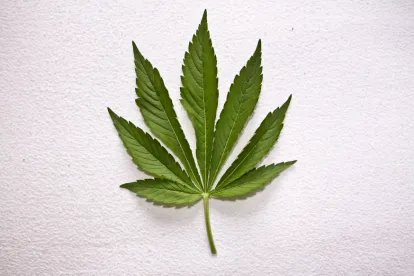On December 14, 2016, the Drug Enforcement Administration (“DEA”), which operates under the United States Department of Justice, published a Notice of a Final Rule regarding marijuana. According to the Notice, the DEA “is creating a new Administration Controlled Substances Code Number for ‘Marijuana Extract.’” The Final Rule is effective January 13, 2017. The Notice states that the new Rule came about as a result of various international treaties related to the international transportation of marijuana and marijuana extracts. As of now, the United States tracks only marijuana, but its international counterparts track marijuana and marijuana extracts separately. The new Rule is set to bridge the gap between U.S. policy and international policy.
Currently, marijuana is prohibited under the Controlled Substances Act (“CSA”). The CSA is a federal statute which governs federal drug policy, including governance over the manufacture, importation, possession, distribution, and use of controlled substances. These controlled substances are classified into five distinct categories (“Schedules”) depending upon the substances’ acceptable medical uses compared to the substances’ potential for abuse and dependency. Substances with a high potential for abuse and dependency with no accepted medical uses are contained in Schedule I. Marijuana is categorized as a Schedule I substance.
Substances are assigned a four digit Administration Controlled Substance Code Number (“drug code”) that is used to track quantities of controlled substances throughout international transportation. The drug code is accompanied by a listing which expressly defines the controlled substance. Marijuana’s drug code is 7360, and marijuana extracts will now have their own number of 7350. The marijuana drug code currently lists “any material, compound, mixture, or preparation, which contains any quantity of the substance, or which contains any of its salts, isomers, and salts of isomers that are possible within the specific chemical designation.” The CSA definition of marijuana encapsulates “all parts of the plant Cannabis sativa L., whether growing or not; the seeds thereof; the resin extracted from any part of such plant; and every compound, manufacture, salt, derivative, mixture, or preparation of such plant, its seeds or resin.” The new drug code will capture products extracted from the cannabis plant that contain only cannabidiol (“CBD”) and no other cannabinoids.
Under the current DEA scheme, marijuana’s drug code covers marijuana, marijuana derivatives, and preparations of marijuana-based products; therefore, marijuana extracts have been and remain categorized under Schedule I. Nonetheless, the new Rule is expected to draw equal attention to cannabinoids, CBD, and hemp by wholly separating CBD under the drug codes.
Given the boom in the “legal” marijuana markets throughout the country, many industry players – as well as employers – wonder how the DEA’s new Rule will impact the marijuana movement throughout the United States. Economic opportunities are accompanied by research opportunities in the “legal” marijuana markets. More research will be focused on accepted medical uses for marijuana. Currently, some domestic research has been focused on the marijuana plant and tetrahydrocannabinols (“THC”). However, there are dozens more CBDs to be researched and developed. It is anticipated that institutions researching the medicinal use of such CBDs will involve researching and developing several, and possibly new, marijuana extracts. Nonetheless, the DEA has made it clear that it will not allow the marijuana extract business to grow or develop unchecked.
The DEA’s actions are relevant for employers because they now have further indication from the federal government that marijuana – and any ancillary substances extracted from it – remains illegal under federal law. Employers should be aware that the world of marijuana extends far beyond the marijuana plant and THC. It is understood that various forms of CBDs provide patients medicinal relief without the “high” associated with THC contained within the marijuana plant. While attractive to many patients in need of such relief, employers should be aware that these forms of CBD, at this point, are typically undetectable on drug tests. As many as 60 CBDs may be available to would-be marijuana users that could go undetected.
Employers should prepare for more marijuana extracts to make their way into their employees’ lives, and possibly the workplace, if such extracts continue to be undetectable. Given the DEA’s express categorization of the extracts, it is anticipated that such extracts will soon be more detectable. Since the door appears to be opening for more marijuana and marijuana extracts to enter the medical market, drug tests which can readily detect these additional CBDs should be expected to follow. Until such time, employers should be ready to face a portion of the workforce that may be undetectably “high.” Additionally, employers should also prepare to face a portion of the workforce under the influence of marijuana that is not “high.”
A question may arise as to whether an employee is in breach of a drug policy if the employee is under the influence of marijuana, or more specifically a CBD, but the employee is not “high” or otherwise inhibited on the job. An argument could be made that the employee’s actions are no different than those of an employee using a generic anti-inflammatory or over-the-counter pain killer while at work. This new frontier will likely develop in the coming years, and the DEA will likely be at the forefront. Employers would do well to monitor the marijuana extract market, newly developed marijuana drug tests, and governmental responses to such developments.




 />i
/>i

